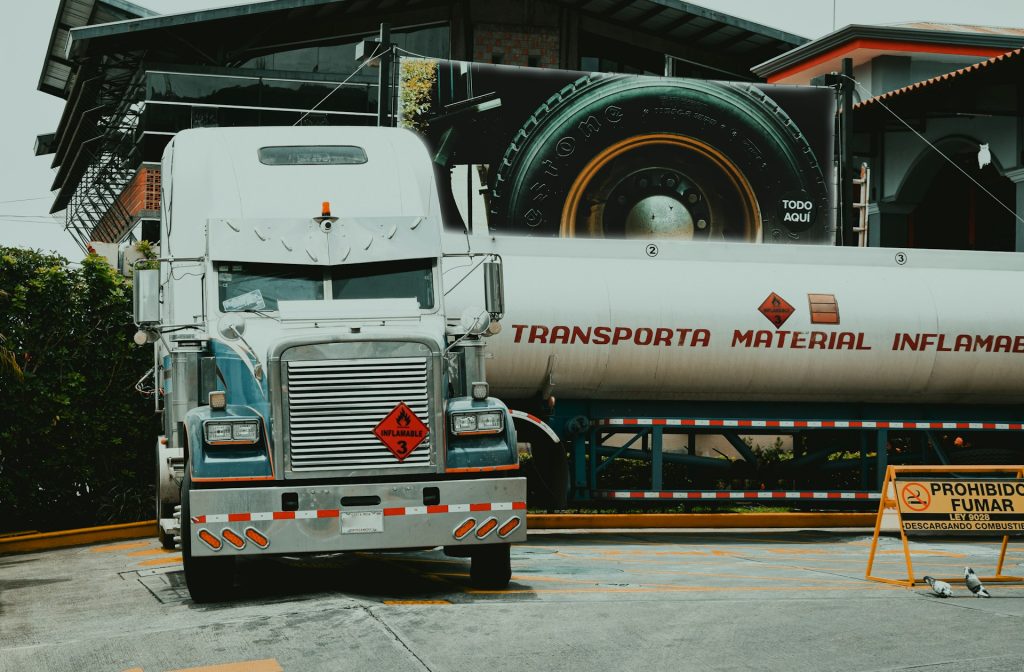Large truck accidents can occur in various ways, and one of the more common examples is known as a jackknife truck accident. This is when the truck’s trailer swings outward to the side of the cab and forms a sharp “V” or “L” shape. It’s a terrifying sight for nearby drivers and even the truck drivers themselves. In an instant, the entire rig is violently forced out of control, often skidding across multiple lanes of traffic and leaving nearby drivers, such as yourself or a loved one, with little or no time to react.
The result is almost always catastrophic damage, including multi-vehicle pileups, property damage, serious injuries, and possibly fatalities. But how do jackknife truck accidents happen in the first place? Let’s take a look in today’s blog post.
Jackknife Truck Accident Causes—More Than Just Bad Driving
- Driver fatigue — Truck driver fatigue contributes to 30 to 40% of all heavy truck accidents. Those are staggering numbers, but should not be surprising considering how often truck drivers work long hours to meet tight deadlines. In many cases, the truck driver next to you on a lonely highway has been behind the wheel for 24 hours or longer, thus impairing their reaction time, decision-making ability, and focus. The result could be a catastrophic jackknife truck accident.
- Driver inattention — Even if a truck driver isn’t sleepy, it’s easier than you think for them to lose focus on long trips. To avoid getting sleepy, they may turn to distractions such as texting, eating, talking on the phone, letting their mind wander, or adjusting GPS settings. Any of these can lead an otherwise good truck driver to swerve into the adjacent lane, lose track of their speed, or fail to stop in time, thus increasing the likelihood of a jackknife truck accident.
- Poor weather and roadway conditions — Sometimes, it’s not the driver’s fault at all. Rain, snow, ice, and fog reduce visibility and road traction. Construction zones make maneuvering large semis and 18-wheelers in tight spaces more challenging. Drivers of other vehicles also pose a threat due to their irresponsible driving in such conditions. If a truck driver slams the brakes too quickly, the trailer’s momentum can cause it to swing out of alignment. This sudden skid makes it nearly impossible to regain control.
- Speeding and reckless driving — Truck drivers often believe they own the road. Drivers of smaller vehicles do not want to be delayed by larger trucks. This can result in speeding, aggressive maneuvers like sudden lane changes, and the risk of not noticing smaller vehicles nearby. Add in having to transport a heavier load than usual, sharp curves in the road, traffic congestion, or driving too fast in bad weather, and speeding becomes an instant recipe for a jackknife truck accident.
- Improperly loaded cargo — Speaking of hauling cargo … if the load an 18-wheeler is carrying is unbalanced, overweight, or unsecured, it can quickly shift during travel and force the trailer to swing out of alignment.
- Mechanical failures — More jackknife truck accidents than you think result from mechanical failures such as tire blowouts, steering issues, and brake failure. While it is easy to assume these are uncontrollable events, the driver or truck company could be at fault if they did not adhere to regular maintenance, inspections, pre- and post-trip checks, repairs, and other important safety checks.
How You Can Protect Yourself or a Loved One from a Jackknife Truck Accident
- Stay focused — Nearby drivers should avoid texting, talking on their phones, and any other activity that distracts them from keeping their eyes on the road. You may not be able to control a jackknife truck accident, but you can be ready to react.
- Give plenty of space — Keep two or three car lengths between you and the nearest large truck when possible. After all, even the best truck drivers need more time and space to stop or maneuver to avoid collisions.
- Be aware of weather and road conditions — The best way to avoid a jackknife truck accident is to avoid driving in bad weather. If you must drive, consider your surroundings, including construction signs, and slow down to increase your following distances.
- Don’t speed or drive recklessly — If you want to pass a large truck on the open road, use your turn signals well in advance when changing lanes and leave plenty of distance between you and the rig.
- Watch for wide turns — Large trucks often require a lot of space to make wide turns safely. This is especially true at intersections and when they are carrying heavy loads. Therefore, please resist squeezing by when they are turning.
- Don’t tailgate — One of the more common reasons for large trucking accidents is improperly loaded cargo, which can lead to dangerous loads spilling onto the highway or the truck rolling over or blowing a tire due to excess weight. You can help yourself by not tailgating. Following this tip could give you just enough time to get out of the way should a truck start to jackknife.
Call Keys Law Offices Today!!
Large truck accidents can occur for various reasons, including fatigue, distracted driving, speeding, inadequate training, and drug and alcohol use. Sometimes, the trucking company can be held liable for an accident if it fails to properly maintain or inspect the truck or violates federal or state regulations. At Keys Law Offices, we are dedicated to representing victims of truck accidents and their families, including those involving semi-trucks.
We understand the complex legal and regulatory issues involved in truck accident cases and know how to investigate and litigate these cases to ensure that our clients receive the compensation they deserve. Please do not hesitate to contact us for a free consultation.
Our staff is always available. Call us today!

